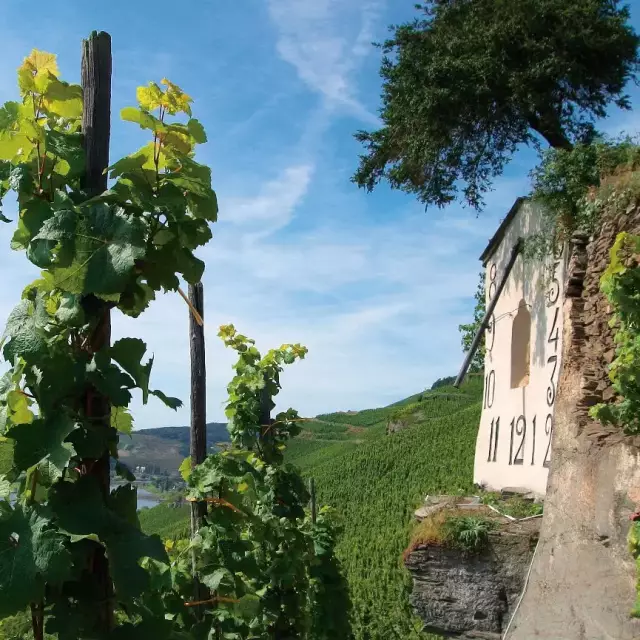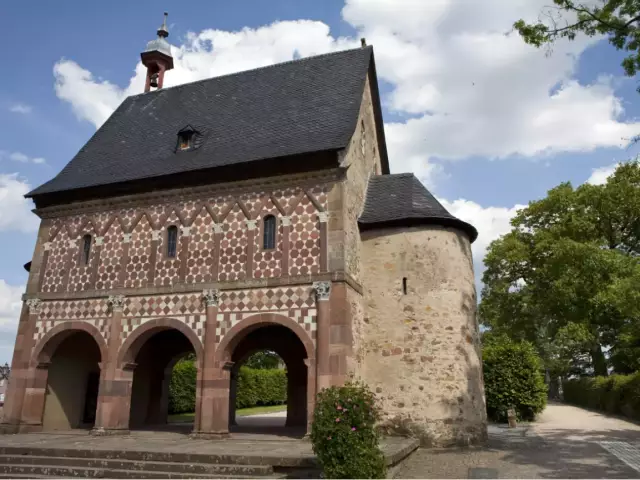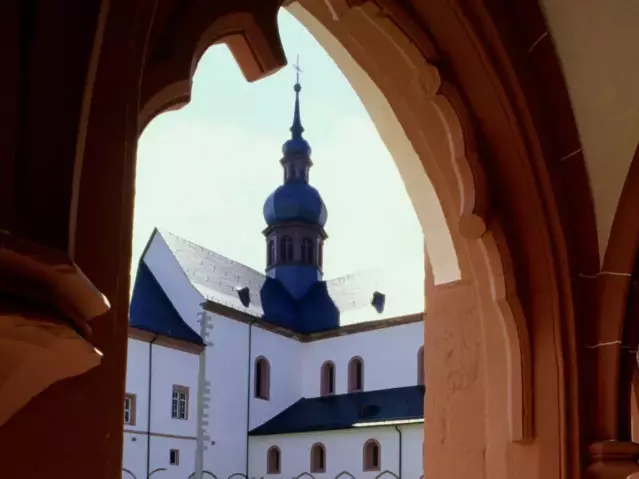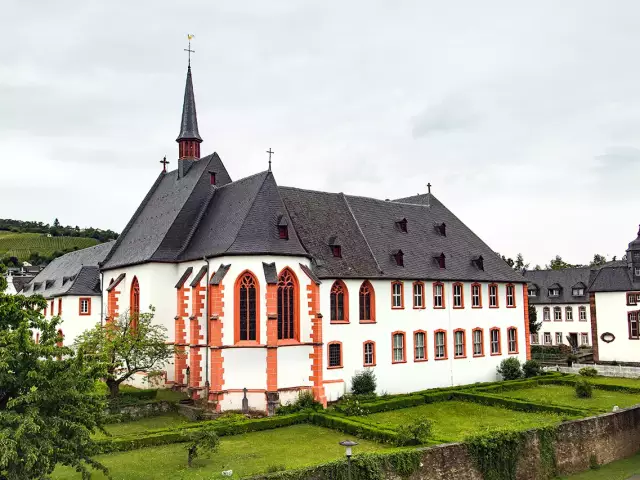The Sundial Vineyards

Time travel through the vineyards around Bernkastel-Kues as you discover a series of sundials high on the dark slate cliffs of the Middle Mosel. They now mark not only the time, but some of the finest vineyards in the world.
They measure the progress of time throughout the day and they are as old as mankind: Up to the beginning of the 19th century, sundials were a synonym for watches. The principle is easy: A pole is fixed into the earth parallel to its axis, then presuming the sun is shining, the pole's shadow then points out the position of the sun, thus denoting the hours or even minutes of the day.
The steep slopes of the Mosel, often directed to the South, were ideal for the setting of sundials. In those days, before pocket watches or even wrist watches were available, it was the sundials who pointed out the day's progression to the workers in the vineyards.
Several hundred of these sundials, mostly made out of stone,can still be seen along the Mosel valley. Many of them figured so prominently in their locations that they even gave their names to the vineyard sites surrounding them. That's no coincidence as sundials were installed on sun-drenched southern slopes and this is where grapes for premium wines also flourished.
The most famous ones are the Wehlener sundial, the neighbouring Zeltinger sundial only a few hundred metres away, and the Brauneberger Juffe sundial. More can be found in Ürzig, for example on the ruins of a Medieval defense tower once part of the three knight's castles. Neumagen, Maring und Pommern feature sundials which figure prominently in the steep vineyards and can be spotted from afar.
In Wehlen, the famous sundial even became the town's landmark. Erected in 1842 by the owner of the vineyard, Jodocus Prüm, it shows the true time of the place: When the sun reaches its highest point above Wehlen, the shadow of its needle points exactly to twelve o'clock. Compared to our modern standard time, made mandatory in 1893, the sundial's time diverges for 32 minutes – the sundial thus running late for about half an hour. It was around the year 1900 that the vineyard site took its name from the famous "Wehlener Sonnenuhr."
Today, the community of Wehlen strives to become the city of one hundred sundials. More than 50 of these markers are already situated around the community, the oldest ones stemming from the 17th century. Also, new sundials emerge, and they come in quite of number of different shapes: there are horizontal sundials fixed on old wine barrels, vertical ones on the facades of houses, equatorial sundials that look like globes and even digital sundials where no needle's shadow is moving but which show the time through a strip of iron marked with numbers – their shadow then paints the accurate number of time onto the ground.
A list on the internet contains each sundial in Wehlen. And who knows, maybe it was the sundials along the Mosel who inspired the composer of a famous German hit to write: "Mach' es wie die Sonnenuhr, zähl' die heitren Stunden nur": Do like the sundials – only count the cheerful hours.




